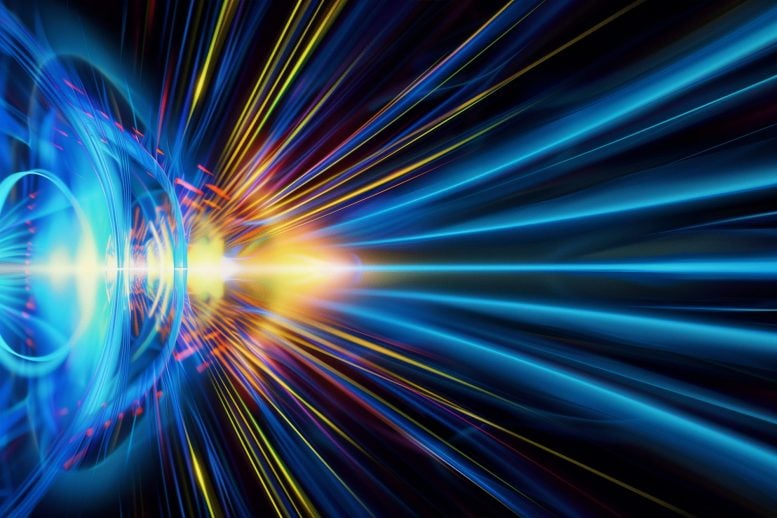The cosmos is full of secrets waiting to be uncovered, and NASA’s James Webb Space Telescope (JWST) continues to reveal them in breathtaking detail. In a monumental achievement, astronomers have used JWST to detect 44 individual stars in a galaxy located 6.5 billion light-years away—placing it halfway back to the Big Bang. This marks the largest number of individual stars ever identified in such a distant galaxy and provides an unprecedented glimpse into the early stages of the universe.
The Dragon Arc and Gravitational Lensing
At the heart of this discovery lies a remarkable cosmic phenomenon known as gravitational lensing. This effect, first predicted by Albert Einstein, occurs when the massive gravitational field of a foreground object, like the galaxy cluster Abell 370, distorts and magnifies light from objects behind it. This distortion creates dramatic arcs and rings of light, revealing hidden features of the background galaxy.
One such feature is the “Dragon Arc,” a glowing crescent of magnified light where JWST detected the 44 stars. Gravitational lensing not only made the galaxy visible but also magnified its stars by factors of hundreds or even thousands. Without this natural cosmic magnifier, observing individual stars at such distances would be impossible—even for the highly advanced JWST.


A Milestone in Distant Star Observation
Before this discovery, individual stars in distant galaxies were an enigma. Even the Hubble Space Telescope, with its impressive capabilities, had only managed to identify around seven stars at similar distances. JWST’s combination of high-resolution optics and infrared sensitivity has now expanded that limit dramatically, allowing astronomers to study stars that existed billions of years ago.
“This groundbreaking discovery demonstrates, for the first time, that studying large numbers of individual stars in a distant galaxy is possible,” said Fengwu Sun, a postdoctoral researcher and co-author of the study published in Nature Astronomy. The Dragon Arc stars are primarily red supergiants, massive celestial bodies similar to Betelgeuse in the constellation Orion. These stars are of particular interest because of their role in the formation of heavy elements and their dramatic demise as supernovae.


A Glimpse Into the Universe’s Early Days
The discovery of 44 stars in a galaxy this distant provides astronomers with a unique opportunity to study the early universe. These stars formed during a period when galaxies were just beginning to take shape, offering insights into the processes that shaped the cosmos in its infancy.
Red supergiants, in particular, are fascinating targets. These massive stars emit immense energy and play a crucial role in seeding the universe with elements like carbon and oxygen, which are essential for life as we know it. Observing them at such an early stage of galaxy evolution could help scientists understand how these stars influenced their environments and contributed to the formation of future generations of stars.
Unlocking the Mysteries of Dark Matter
The implications of this discovery extend beyond the stars themselves. The gravitational lensing that made the Dragon Arc visible is heavily influenced by dark matter, an invisible substance that makes up 85% of the universe’s matter. By studying the distortions caused by lensing, astronomers can map the distribution of dark matter in the foreground galaxy cluster Abell 370.
“Observing more individual stars will help us better understand the dark matter in the lensing plane of these galaxies and stars,” Sun explained. This discovery represents a significant step forward in unraveling the mysteries of dark matter, which, despite its prevalence, remains one of the greatest enigmas in modern astrophysics.
Paving the Way for Future Discoveries
The 44 stars in the Dragon Arc are just the beginning. Astronomers plan to use JWST to search for more magnified stars in other distant galaxies, hoping to uncover additional details about the universe’s formative years. These findings could reshape our understanding of everything from star formation to the large-scale structure of the cosmos.
This discovery also underscores the transformative power of JWST, which has already begun rewriting the history of the universe with its unparalleled ability to observe ancient light. As the telescope continues its mission, astronomers anticipate even more groundbreaking insights into the universe’s most profound questions.
Got a reaction? Share your thoughts in the comments
Enjoyed this article? Subscribe to our free newsletter for engaging stories, exclusive content, and the latest news.








Leave a Comment